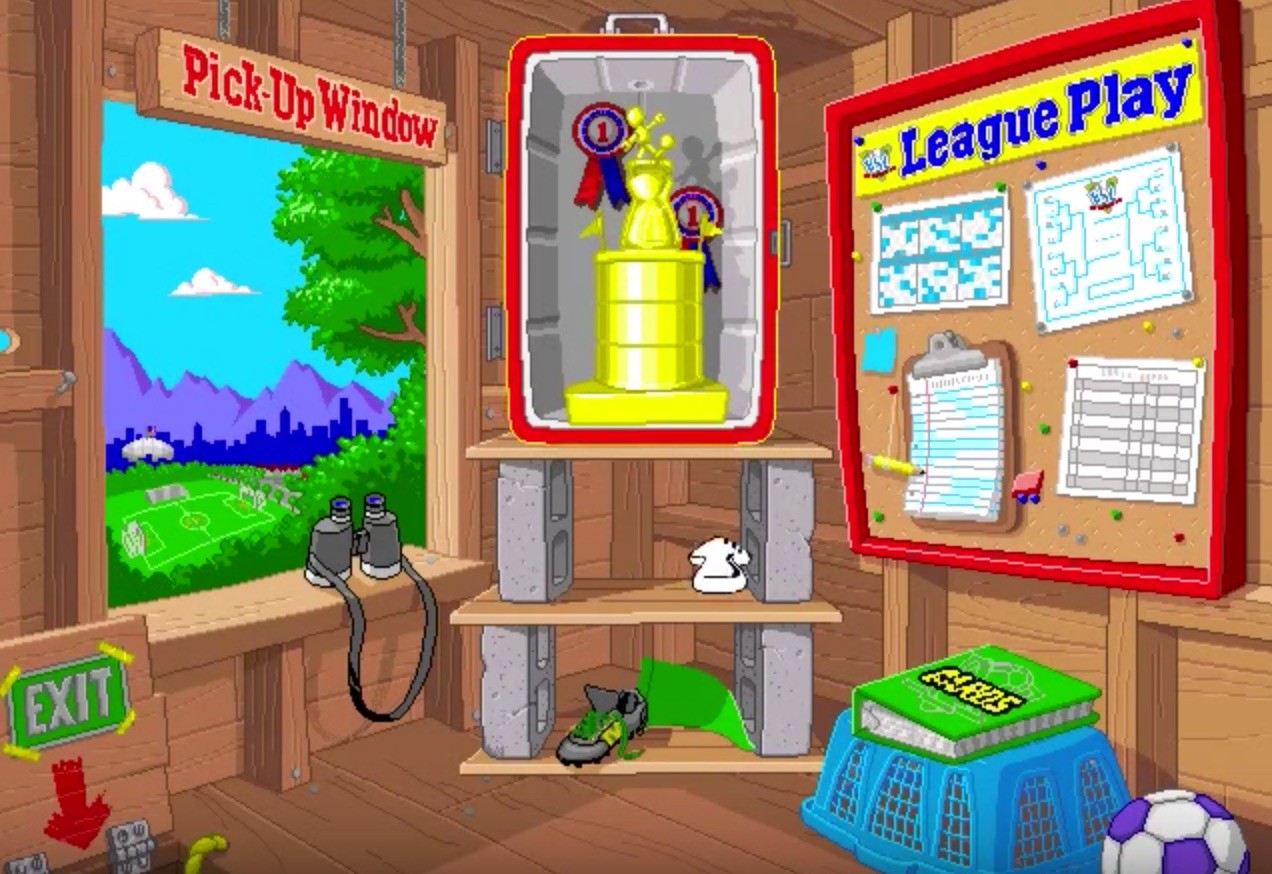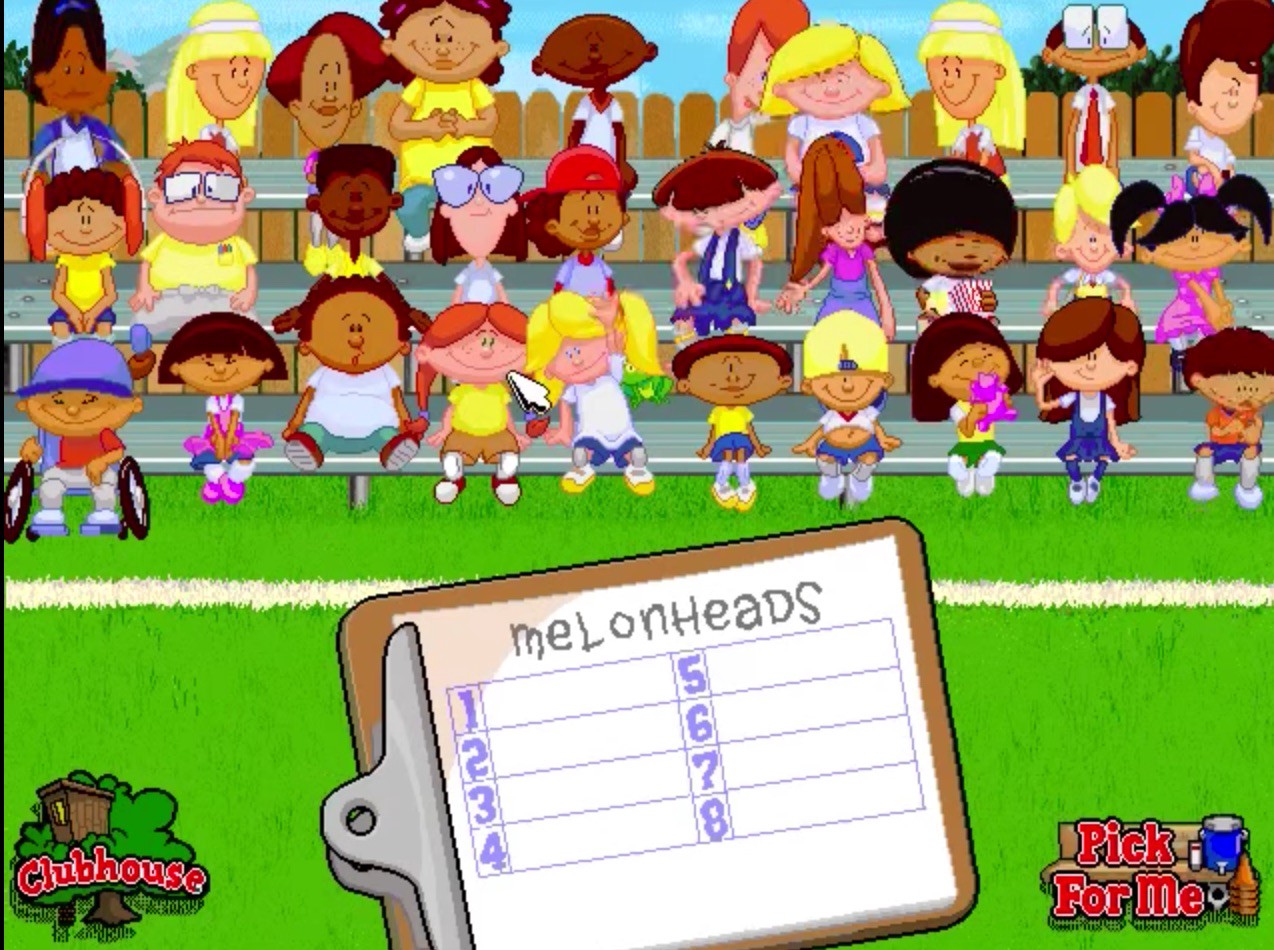A look at an influential video game series with the people who brought it to life

When artist Mark Peyser and programmer Richard Moe set out to make the first Backyard Sports series — baseball—they set out to make, in Moe’s words, a “sports game for kids that featured kids’ quirks and kids’ humors, but that also was based on more realism than some might expect.”
This subtle realism came out in a lot of ways. There were the fields: “Playing in weird sandlots, playing in someone’s backyard and having their house be part of the game — that was real life,” says Nick Mirkovich, who was a lead on the later Backyard Soccer. There were the stats: “There was real math going on behind the ball flights,” Moe says, and they worked hard to calculate stats “like they did in the big leagues.”
And, of course, it came out in the Backyard kids. Realism here came in both the hidden details, like how twins played better when picked for the same team, the kid-centric details, like how the kids would often get distracted and chase a butterfly in the outfield, and in the literally front-facing ones. The unbelievably diverse — in race, gender, ethnicity, and even in things like height and personality — cast, who really looked like they had walked right out of the ten random houses on a neighborhood street and onto the bleachers.
In some ways, they had. “All of the backyard stuff is based on…us as kids and how we played and [the neighbors] we played with,” Mirkovich explains. “We could’ve had a whole bunch of white kids, but we thought ‘no, we can’t do that.’ And if we’re not going to do that, we have to really not do that.”

But this was still was a relatively natural effort because, as Mirkovich says, these kids’ realism came because their basis was just that: real life. As Mirkovich grew up on a military base, the neighbors he grew up with were “a lot of different kids from a lot of different places.” Peyser birthed the wheelchair-bound Kenny Kawaguchi because he “went to high school with a kid in a wheelchair and he was very athletic,” so he told his team that they “have to have a kid in a wheelchair.” And Moe studied Urdu and Hindi in college, and “wanted to bring characters like that into the game.”
Matt Mahon, who worked on every game, puts the thought process more bluntly: “We could really have a character for everybody.”
“And that’s just how [the original designers] saw the world,” remembers games artist Rafael Calonzo. “They didn’t think they were doing anything unusual.”
Peyser agrees. At the end of the day — and with a little influence from the Bad News Bears — “It was us just sitting around talking about kids we knew when we were kids. … It wasn’t a deep decision process. We were just trying to fill out a roster of 30 kids.”
And yet, no kid was just there for the sake of being there; having 30 kids allowed room to not just add a character of a certain race or ethnicity because you needed x if you had y. Peyser explains that they “avoided having tokens, because we had the room where we can actually build diversity in everyone, in every population.”
As an artist, Peyser was able to build this down to the smallest of details; he “worked really hard on coming up with a color scheme for the skin tones” because it “infuriates him when, in cartoons, they have ‘black kid’ color and ‘white kid color’ and ‘Asian kid’ color.” There wasn’t going to be a people of color just to have people of color, nor were they all going to be the same color.
Nor were those kids there just to stand in the back. “We tried to incorporate everybody,” explains Mirkovich. “Maybe in baseball, Keisha — she could hit, but she was really slow, so she played ok in baseball, but in soccer it didn’t really work for her. But then when it came to football, she was amazing. And then you could say that was their favorite sport, and that explained it.”
“Each player had something to contribute to the team,” producer Aimee Paganini agrees. This is why, whenever they’d discuss whether they should trim the teams, it always came down to: “No, we need the whole neighborhood.”
And, when building their looks, personalities, and skill-sets, “If anyone asked why,” Peyser says, “the question was: ‘why not?’” Why couldn’t the “girly-girl Maria” and Reese Worthington, “a short little nerdy kid” laughs Mirkovich, be two of the best soccer players? Why couldn’t the best player and “secret weapon,” Pablo Sanchez, also be the smallest? (Years later, Messi makes this question even easier to answer.)

What’s more, as Paganini remembers, there was never even that question at all. “It was never like, ‘why do you have a girl sportscaster? She won’t know what she’s talking about.’ It was more like, ‘no, of course she does.’” Moe remembers Stephanie Morgan’s obsession with the sport in a similar vein: “Most people would think of a little boy who’s dad got him into baseball, but why can’t it be the little girl who’s obsessed with baseball?”
And it was such an attention to inclusivity that helped inform the decision to have soccer at all, as the second Backyard sports game following Baseball’s success. “It was either going to be soccer or football.” Mirkovich explains. “A lot of people were jazzed about soccer…[and] around that time [1999] the women’s game was getting going too, as far as the World Cup goes, so I remember going ‘okay, well girls are into this, too; this is not just for guys. Let’s do this one.”
The Backyard Soccer designers also carefully selected the countries that would be involved in the game, trying to bring attention to those beyond the capital-B capital-O Big Ones like Brazil and Argentina that were “guaranteed” to be included. “We would vote, ‘I want Ireland in’ or ‘I don’t think that team is going to make it in,’” Mirkovich says. “We had a lot of Asian teams; we added Japan, China, and [South] Korea.” The designers also made sure that largely ignored aspects of the sport itself made their way into Backyard Soccer — for example, the game featured promotion and relegation between divisions, which some argue is unfairly left out of not only other soccer video games but also out of real American soccer. But that’s a different article.
It is in this context of such expansive inclusion, which even covered a still-today-underrepresented women’s game because of course it should’ve, that the dearth of professional women’s players in the 2004 MLS “Pros” edition stuck out. They made up only 20% of the included professional roster. It especially seemed like quite the contrast to the “50/50 boys and girls” ratio Mirkovich says was part of the baseline for the regular Backyard kids.
But it wasn’t for lack of trying. “Women’s soccer was doing really well, and it was like, why wouldn’t you put in the women?” Mirkovich explains. “They jumped after them, [but] I think they had to go individually to talk to each one of them.”
That was a different situation than with the men; Major League Soccer was approached by Humongous Entertainment, and then the league itself could easily contact players to vet interest. Going to the women independently and one by one was a “headache,” not to mention that the ability to get in touch with some players could have been “out of [their] hands.” But, Mirkovich assures me, “we would’ve liked to have as many women as possible.”

Considering everything else, I’m inclined to believe that. And, anyway, the professional players were only in one edition of Backyard Soccer. It was the regular, everyday Backyard kids who were the crux of the game; I can remember Pete Wheeler’s stats off the top of my head faster than any professional player’s. And it’s the kids who Mahon is “delighted” to “have had this much lasting impact.”
But you’d still be “hard pressed to find as diverse a cast in much of pop culture today,” Mahon adds, which is unfortunately true. The characters and the game did not seem to resonate with the larger world as they did the generation who grew up playing with them. EA Sports’ FIFA series including women indicates a step in the right direction, albeit a slow and timid one, but as the Backyard Sports generation now begins to trickle out of college and into the workforce, let’s hope they continue to bring the spirit of Pablo Sanchez and Sunny Day — and the ‘why not?’ sentiment that birthed them — into it, too.

